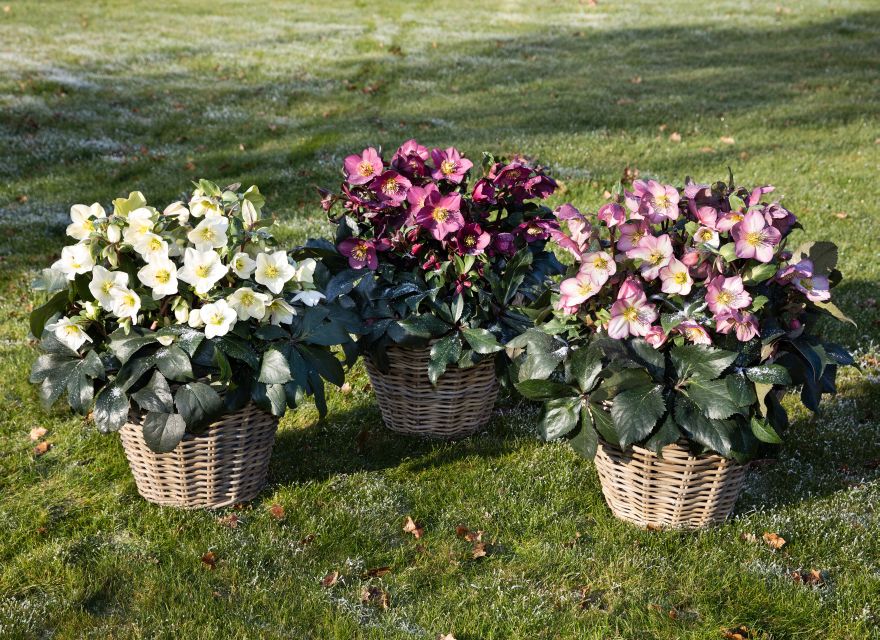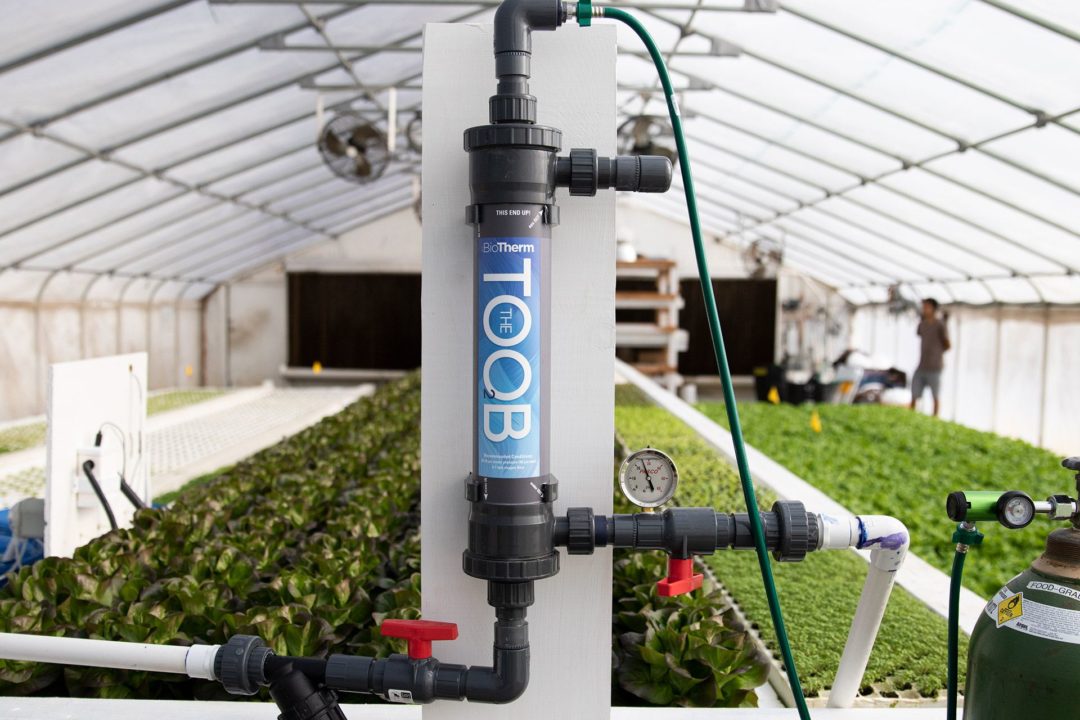Best Practices for Hybrid Hellebore Production

Hellebore production is seen here at Skagit Horticulture. Photos: Heuger
Hellebores are on the rise, but sometimes growers are hesitant because of a longer crop time. The following guidelines will guarantee a win. For successful Helleborus production, choosing the liner size and schedule to produce well-developed plants that flower in the same season is essential. Helleborus can be planted in the spring from a 72-cell plug and from a larger plug like an 18-cell in the fall.
72-cell plugs are sold in early spring, and depending on plant dates and cultivation, they can fill out 2.5-quart, 1-gallon, 1.5-gallon, or 2-gallon pots. For larger containers, growers must plant early and choose vigorous varieties or start with a larger plug, for example, a 40-cell liner. For growers who want to grow Helleborus in smaller pot sizes, compact varieties are also available.
Fall planting is an alternative for growers who need a shorter schedule and growers in warmer climates who cannot hold Helleborus over the summer. Liners must be bulked up and mature enough to grow into flowering plants the following spring. It should be noted that the reduced crop time will produce smaller plants and fewer blooms in the first season. Planting into a 2.5-quart pot or 1-gallon works best; larger containers are not recommended.
Planting
Helleborus should be planted during cool temperatures to avoid any stress. Plant liners right at soil level without burying the crown too deeply or exposing it. To prevent weeds, growers can top dress with bark or use coco fiber mats.
Vegetative growth for hellebores mainly happens in the spring and fall. Early plant dates are recommended to take advantage of cooler temperatures to establish the plants. Potting between Week 10 and Week 16 directly outside, in a ventilated greenhouse, or hoop structure, will result in well-developed plants with high bloom counts. Plants need to be protected from late frost if necessary. Fall planting dates depend on temperatures. Planting dates need to give hellebores enough time to grow, or they will not flower.
Soil Mix and Fertilization
Use a well-draining potting mix that does not compress, for example, a mix of peat and extra perlite. The pH should be between 5.8 and 6.4 and not drop throughout the crop. If slow-release fertilizer is incorporated into the potting mix, use a low- to mid-rate of an eight to nine month cool-season release and supplement with liquid feed. Fertilize during the main growing season in spring and fall with an electrical conductivity (EC) of 1 to 1.5 and reduce applications during hot weather conditions. Plants absorb less, and salts can build up in the substrate, which can be problematic, especially when using slow-release fertilizers. The EC level in pots should not exceed 1.8 at any time, and regular soil analysis is recommended.
During vegetative growth, use fertilizers with a higher nitrogen content. When plants switch to producing buds, a higher potassium content supports hardiness, sturdy stems, and healthy flower development.
Water Management
Optimal water management is essential as Helleborus does not like extremely dry or wet conditions. Plants should never be exposed to standing water. Greenhouse floors or outside growing areas need to be leveled and drain well. Low spots can lead to root or crown rot.
During high-temperature conditions, irrigation in the morning is most efficient and reduces stress. Extreme dry down can also cause permanent root damage, which might not be immediately visible. Even if plants appear fine after watering, they can be weakened and show signs weeks after the event.

Shown here are Red, White, and Rose colors in the Ice N’ Roses hellebore series from Heuger.
Temperature
Helleborus thrive in cooler temperatures, and the roots are heat sensitive. Use UV-resistant pots that let the least amount of sunlight pass through.
During hot days, Helleborus needs shade to keep the soil from heating up. Keep plant pots tight as long as possible, because using tight spacing allows the foliage to shade the pots. If roots get too hot, they can die, often seen in pots facing south. Shading or cooling must be provided if temperatures rise above 82ºF for longer periods, especially during the summer months.
Growers who grow hellebores outside can set up a shade structure for the summer or pull shade cloth directly on the plants to reduce the temperature. If growing inside, use curtains and whitewash on greenhouse walls. Fog or boom irrigation could also help with inside cooling.
Shade is used to keep root temperatures cooler and not to reduce light levels. If Helleborus is grown under permanent shade in areas of low light, it will lead to reduced growth and poor development.
Helleborus should be moved inside during the winter to keep plants from freezing and protect the flowers. Keep Helleborus as cold as possible above freezing to hold flowers. If greenhouses warm up for longer periods, plants can bloom early, and flowers may not last as long.
Spacing and Plant Growth Regulators
Spacing must be done when plants get crowded and stretch, but not prematurely, as the foliage helps keep the soil cool. To reduce stress, avoid spacing during hot weather.
Plant growth regulators (PGRs), e.g., daminozide, can be used depending on the variety to avoid petiole stretch. Helleborus often produces just one leaf at a time, which will continue to elongate as long it is unfolded, so timely sprays are important.
Helleborus may produce early flowers. They should be removed so plants don’t waste energy. If the removal is not possible, old flowers can be cut off later during shipping.
Pest and Diseases
Helleborus usually do not get many pests or diseases, but like any other plant, when stressed, they become vulnerable. Weakened plants can be susceptible to Pythium, Phytophthora, Rhizoctonia, or Fusarium. Monitor root development regularly; preventative applications against root or crown rot are beneficial. Check for Botrytis and treat accordingly. Thrips can damage the flowers; also, scout for aphids and mites. Hellebores are susceptible to slugs.
Hellebores are cold-loving plants and, therefore, the opposite of many crops. But production is less complicated than you may think, and by choosing the varieties, schedule, and supply chain that fit their needs, growers can achieve healthy profit margins.









